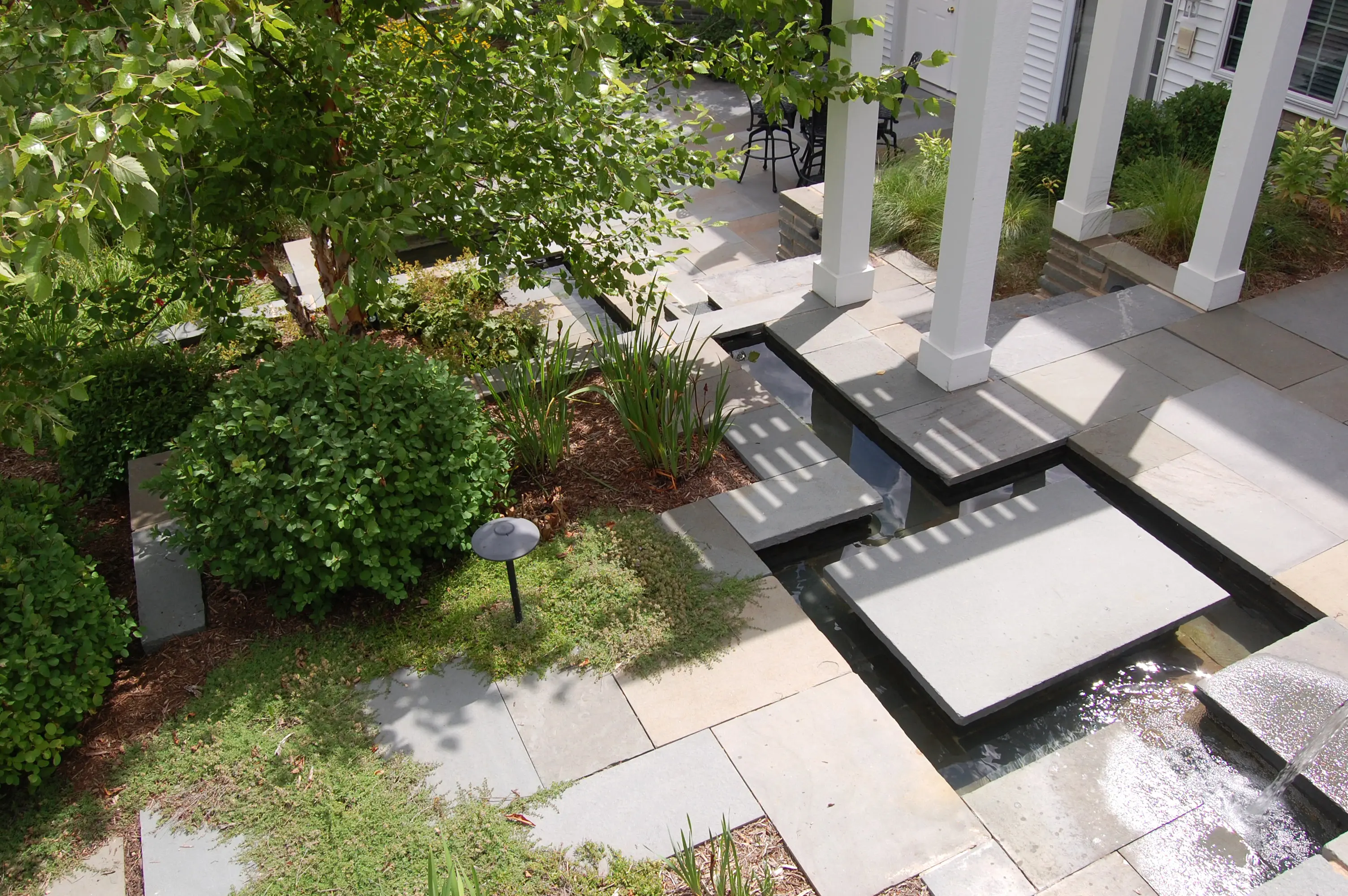
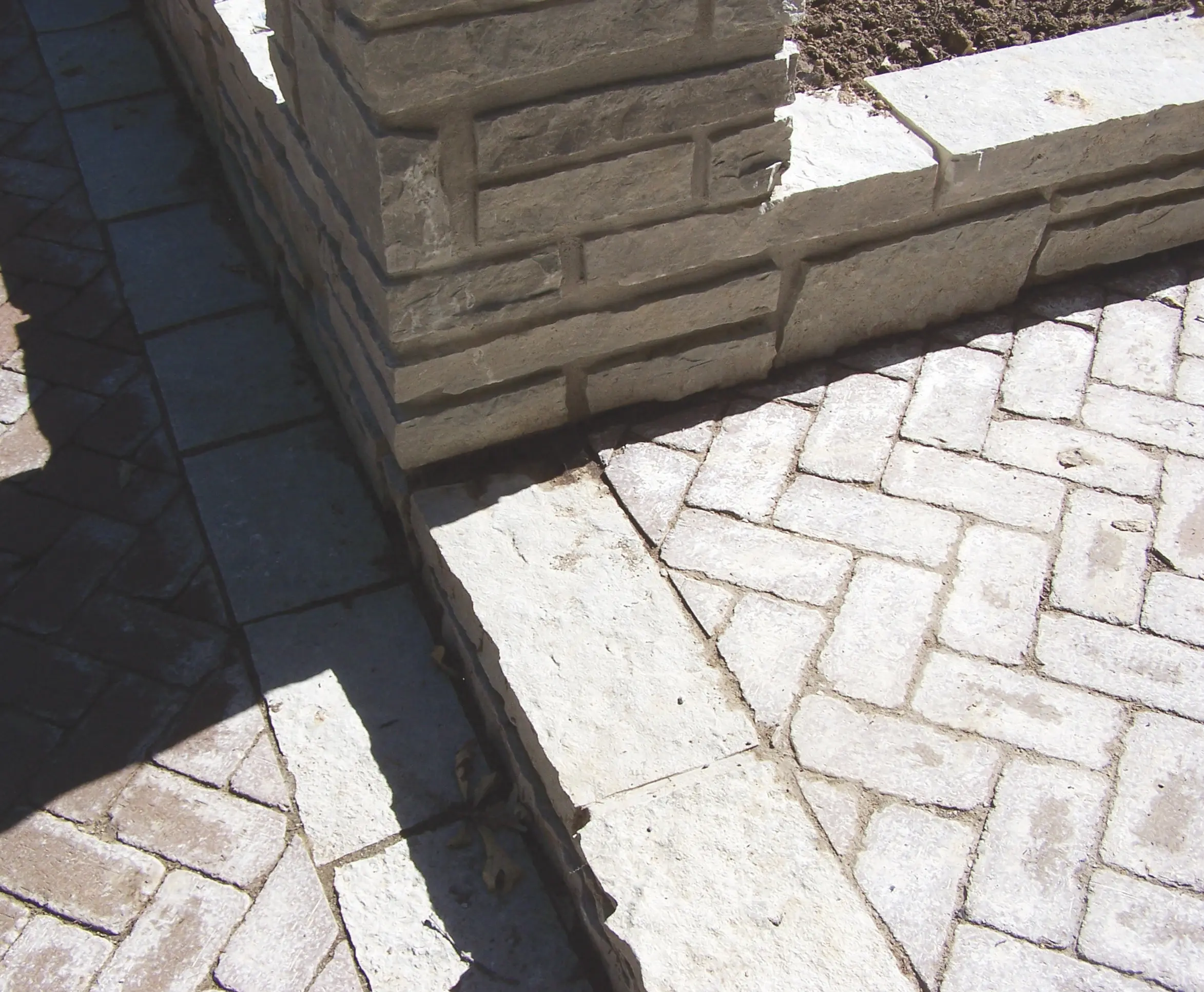
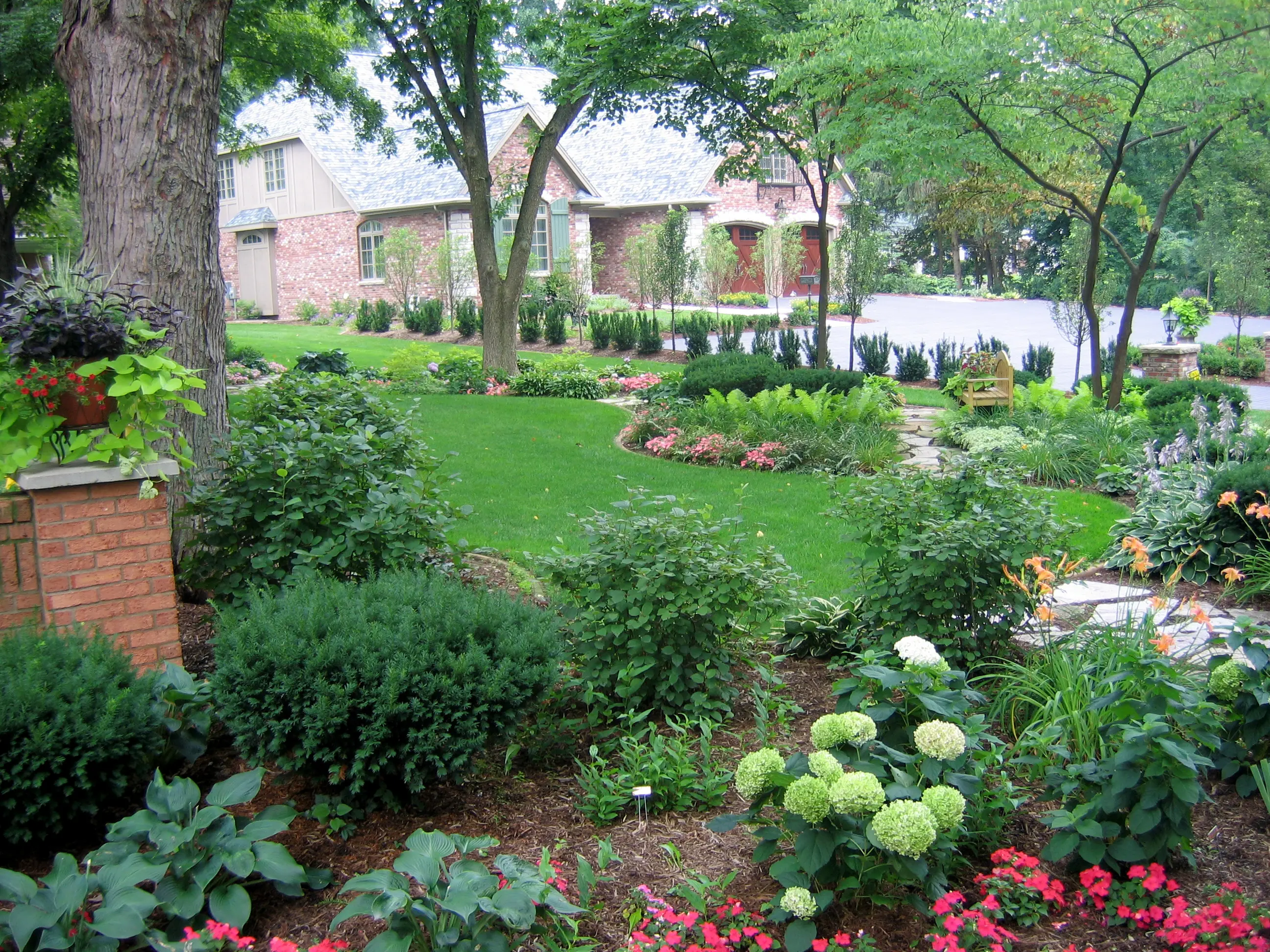
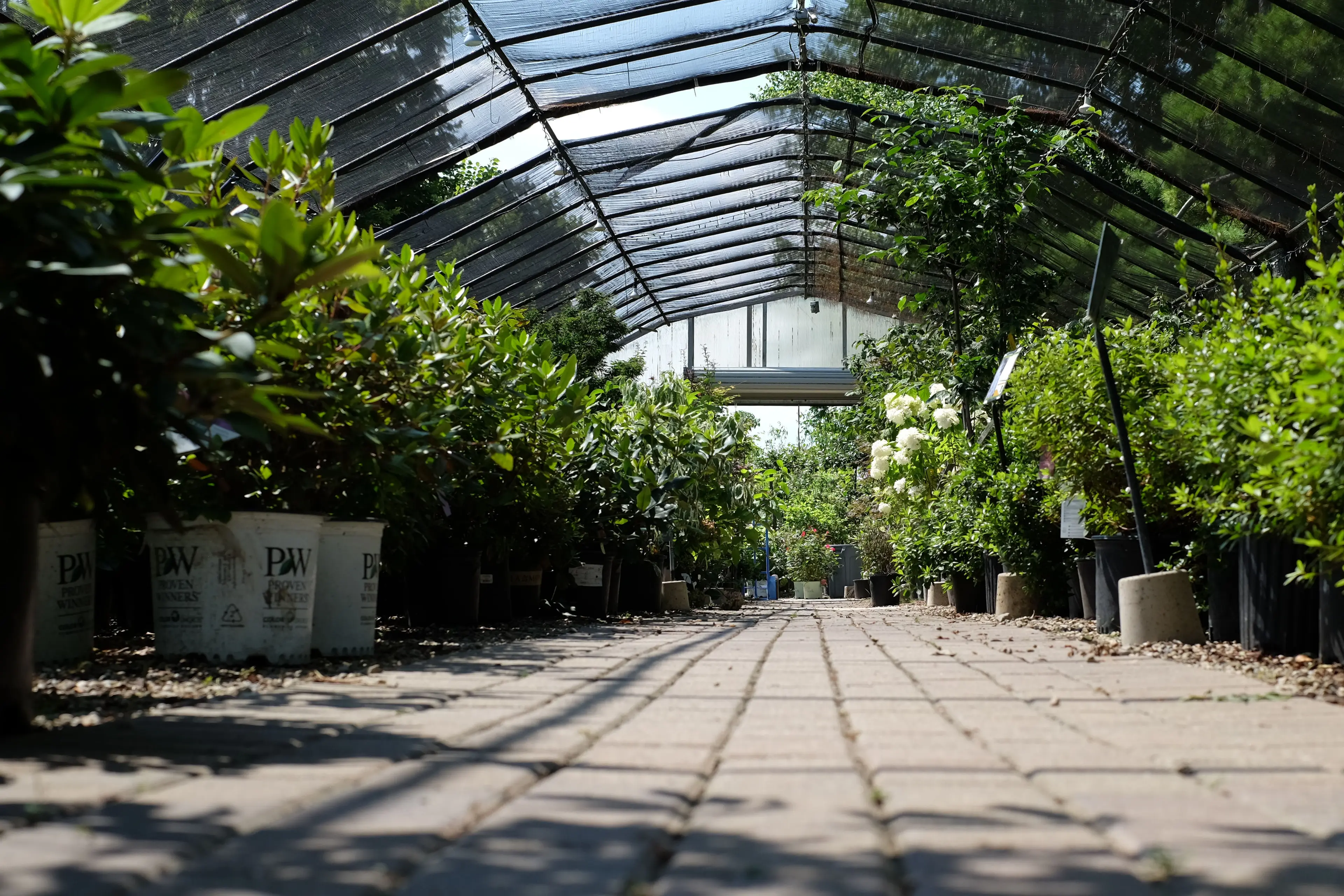
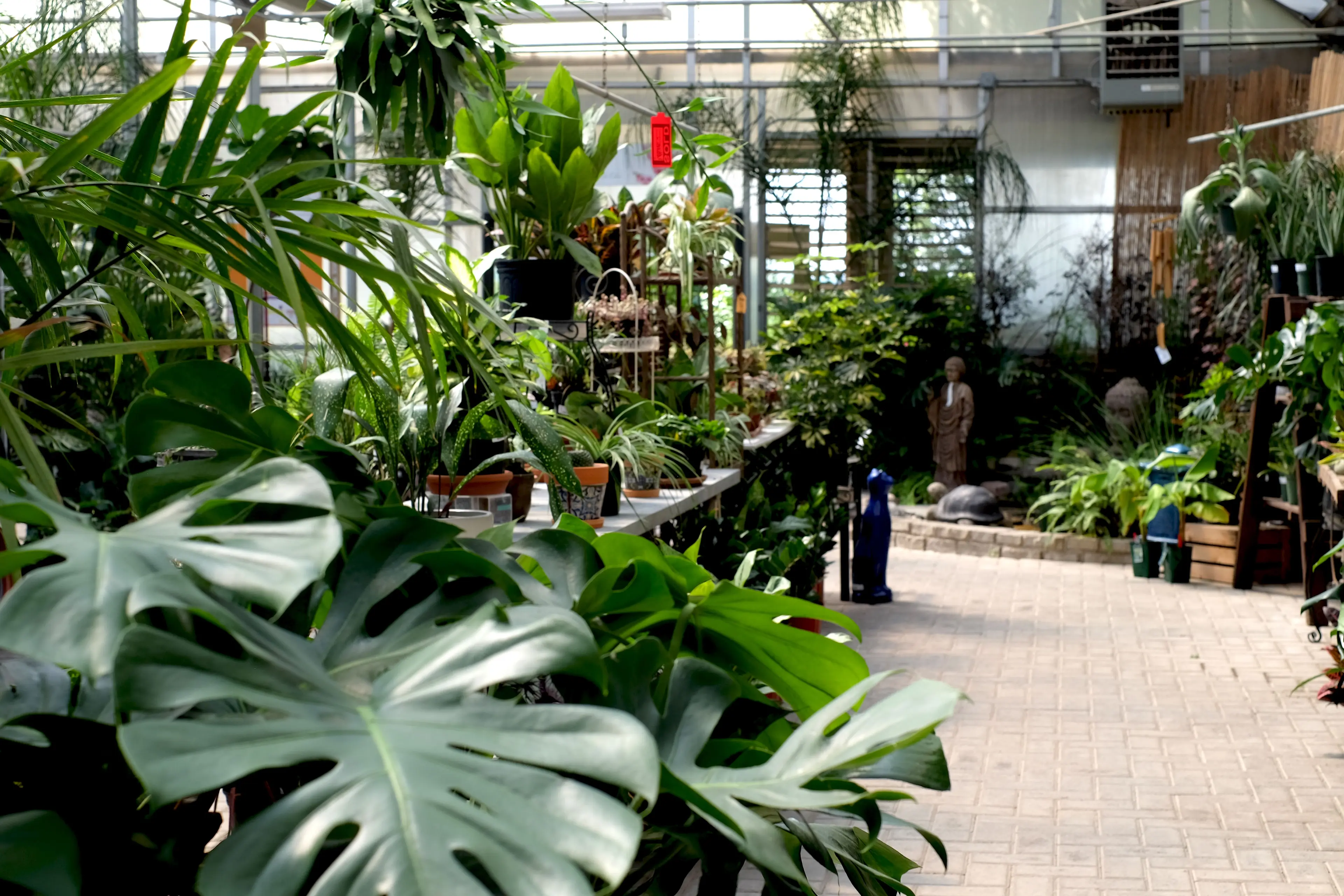
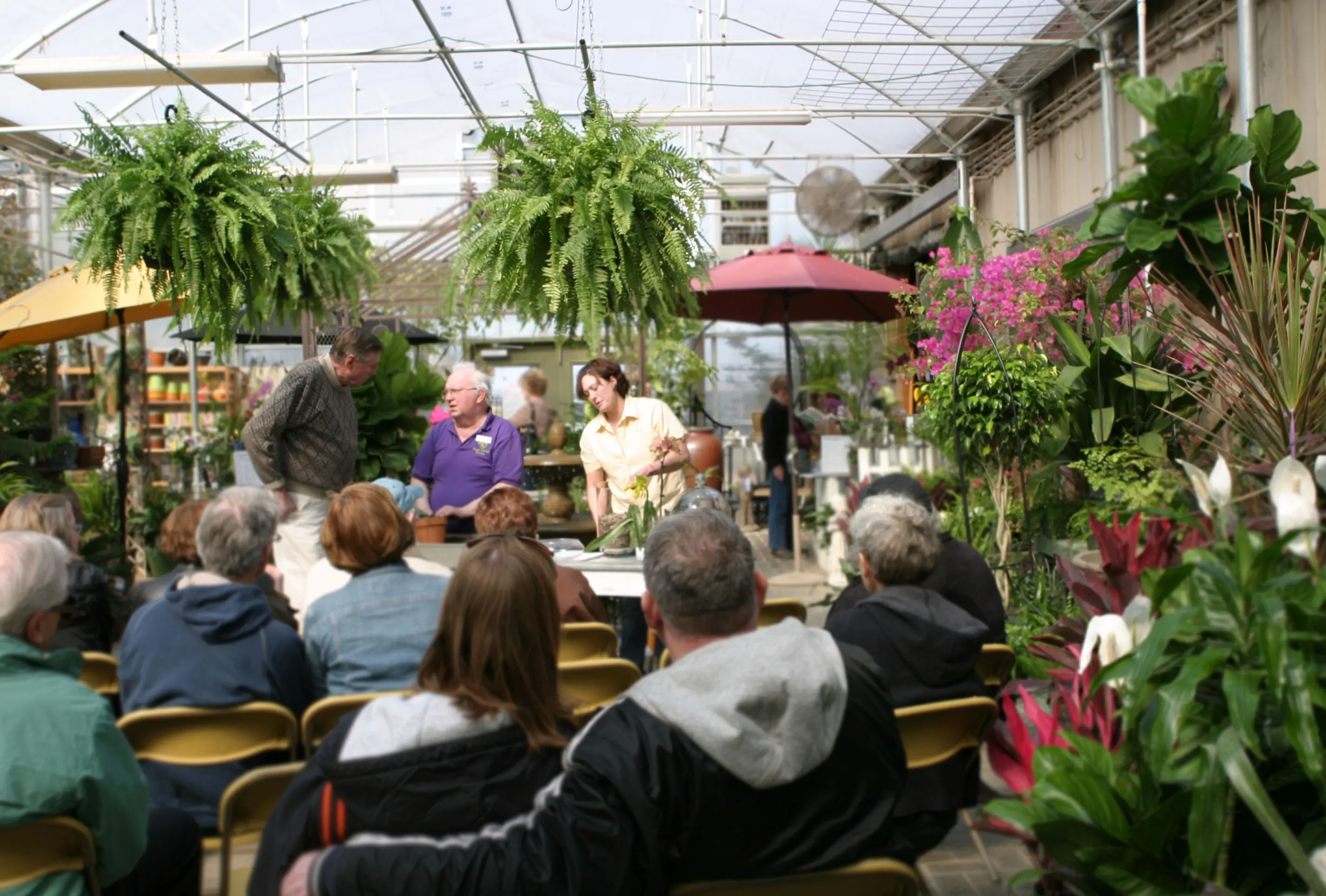
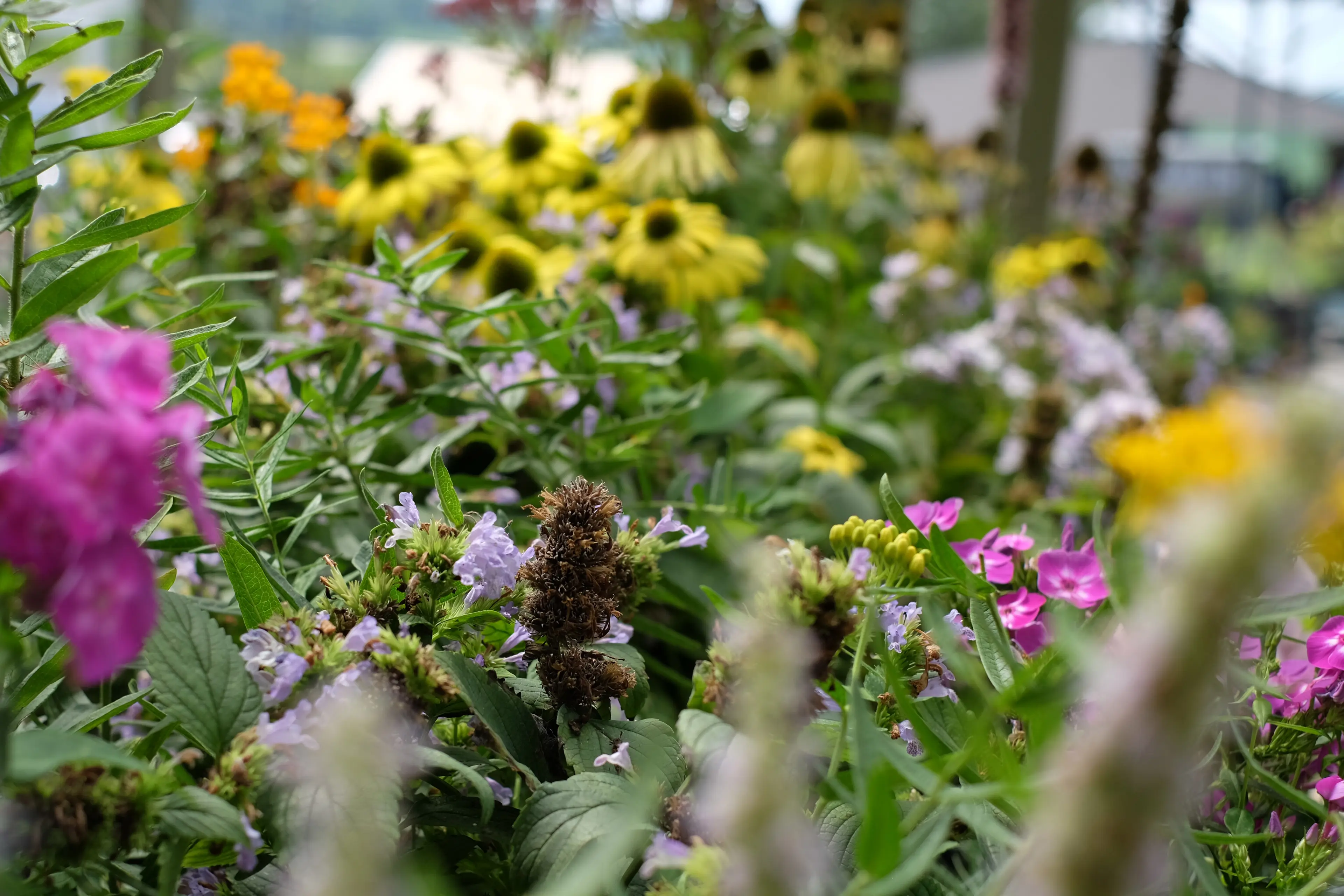

Garden Center
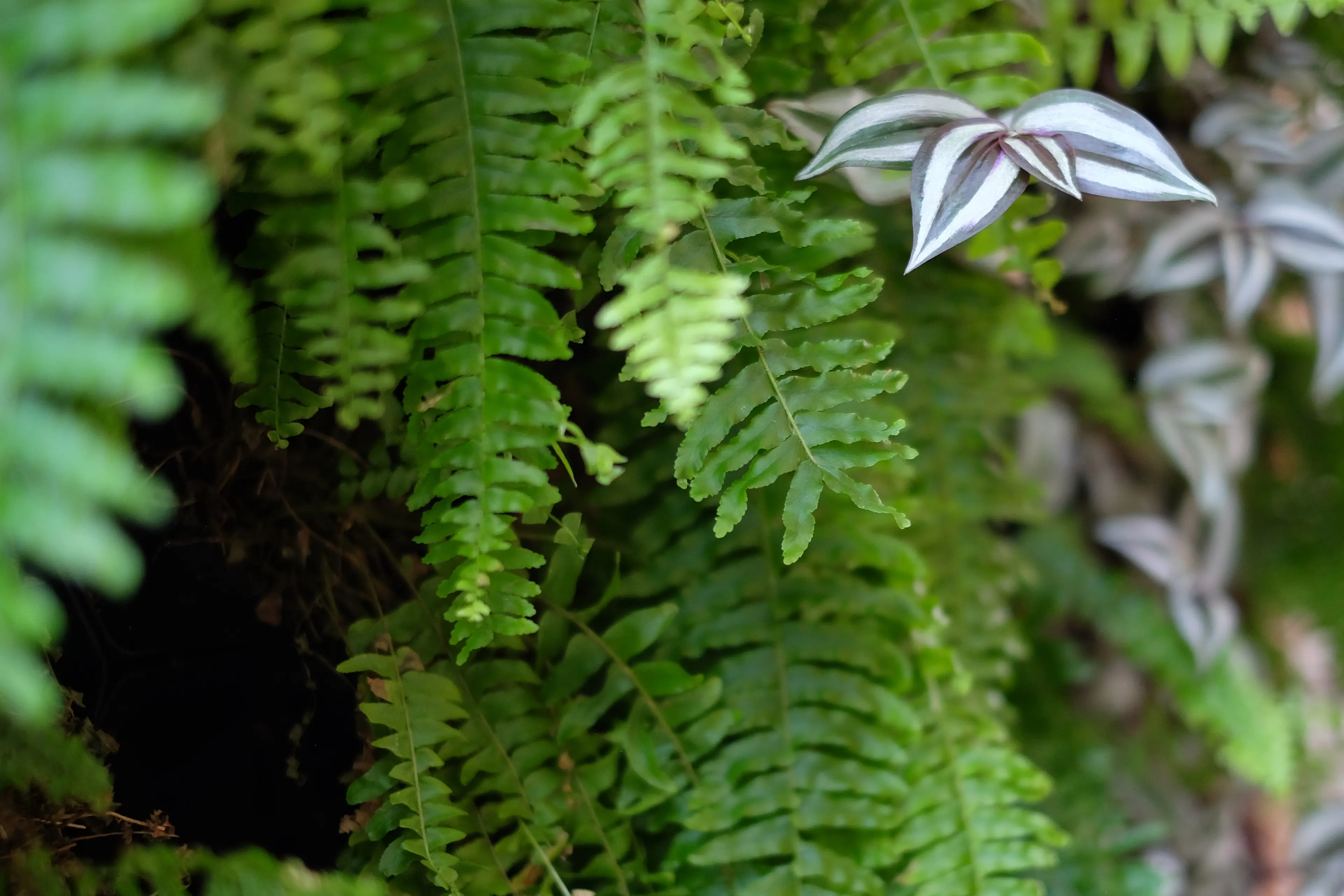
Pollinator Week: 15 of the Best Plants for Hummingbirds

Everyone loves the sight of hummingbirds swarming around a feeder in the middle of summer. These tiny birds feed primarily on sugary nectar, a food source rich enough in calories to allow hummingbirds to flit and zip around from garden to garden. What would they do without artificial nectar, though?
In nature, they feed from flowers! You've probably noticed hummingbirds visiting your window boxes, garden beds, and planted containers before, but did you know that there are certain flowers that actually attract these sweet little birds?
Beyond being a joy to watch in the garden, hummingbirds also serve an important ecological function: assisting insect populations with pollination! With their long, narrow beaks and teeny-tiny tongues, hummingbirds are able to pollinate flowers that bees, butterflies, bats, and other pollinators can't reach. Fun fact: Hummingbirds do not seek out food sources by sense of smell, but by the bright colors and shape of the flowers! They know which flower shapes are attuned to their feeding style, and will seek out tubular blooms to feed from.
We are happy to provide recommendations for 15 of the best annuals, perennials, and shrubs that you can plant in your yard to attract hummingbirds in Central Illinois!
Most people install annuals in their planters and beds in early May and enjoy their color all summer long. These plants aren't winter hardy in Illinois, but since many North American hummingbirds spend their winters in Mexico, these plants aren't necessarily beyond their typical menu.

1. Lantana
These exotic plants feature bursts of multi-colored flower panicles that continue blooming throughout summer and into fall. They are highly heat and drought tolerant, perfect for super hot areas of your landscape. Plus, their mounding and trailing habit are ideal for hanging baskets!
Native to central and south America, lantana is a favorite of our native hummingbirds, and you're sure to see them visit these tubular blooms throughout the summer months.
In the image to the right, a hummingbird dives head-first into some brand new lantana blooms!
2. Petunia
A classic container annual, petunias come in myriad colors and their long-lasting, heat-tolerant blooms are a long time favorite of new and professional gardeners alike. Due to the abundance of blooms adorning even singular plants, petunias can be a reliable nectar source for hummingbirds throughout the season.
3. Manettia (Candy Corn Vine)
Named for the tiny flowers banded with orange and yellow, candy corn vine is a frequently requested plant at Green View by gardeners hoping to attract hummingbirds and butterflies. In nature, this plant can be pruned back and kept in a bushy form, but for single-season purposes, simply allow it to climb a trellis or fence for the season. At our garden centers, these plants are sold in a container that includes a trellis, too!
4. Tropical Hibiscus
These iconic tropical plants are a favorite for decks, patios, and poolside planters. With large, colorful blooms and abundant pollen and nectar, your hibiscus will quickly become a hub for all kinds of pollinator activity, including hummingbirds! At Green View, we carry hibiscus in colors from solid yellow, red, and pink, to multicolored specimens. Pick one up for your patio and bring the tropics (and hummingbirds) home!

These whimsical flowers never fail to captivate passers by when they arrive at the garden center in hanging baskets each spring. Not only are they exciting to people, but hummingbirds adore them! These little ballerina-shaped flowers are full of difficult-to-reach nectar, perfect for hummingbirds.
In the image at left, see a cluster of iridescent birds feeding from some fuchsia blooms.
6. Agastache / Hyssop
Known also as "hummingbird mint," agastache is a tried and true plant for attracting these tiny birds to your garden. Many cultivars are hardy through zone 4 (-30 degrees F), making them a great choice for perennial gardens and pollinator beds.
These plants are also well-adapted to hot and dry climates, and prefer lean (not overly rich) soil. This means you can plant agastache in areas of your yard where heavy-feeding plants tend not to thrive, and they can really take off!
7. Kniphofia

These neat plants appear simultaneously to have come from the jungle and the desert. Their low-ground foliage features summer bloom spikes, covered in dozens of blossoms. Also known as 'red hot poker' plants, the vibrant orange, yellow, and red hues of the blossoms are highly attractive to hummingbirds.
In the image to the right, a native North American Ruby-Throated Hummingbird visits the newly opened blooms of a kniphofia plant.
8. Salvia
This super hardy, low-maintenance perennial plant is a classic for pollinator beds of all shapes and sizes. Available in small and large varieties (from 8" to 18+" tall) and in a variety of colors (ranging from violet to true blue and even pink), every yard has a perfect spot to install ornamental salvia.
The flower spikes on these perennials are covered in small, fragrant blooms sure to keep visiting hummingbirds enamored as they move from blossom to blossom.
9. Zinnia
These double-flowering plants are a major food source for our region's native pollinating insects, mammals, and birds. The image featured at the top of this blog post shows a hummingbird feeding from a zinnia flower, which may seem an unlikely spot given its shape compared to other hummingbird favorites. This just goes to show that any flower can be an important food source for wildlife!
10. Phlox
Garden phlox and creeping phlox are both great choices for attracting and feeding early and late season pollinators alike. They are sun-loving plants that do better with a bit of shelter from the afternoon heat, especially during dry periods -- but once you have secured a good site for them, you'll be rewarded with vibrant clusters of flowers that hummingbirds can't resist.
11. Bee Balm
As a member of the mint family, monarda (bee balm) is a vigorous perennial that loves the sun. The bizarre, almost tropical blooms form a ring around the stem, providing various spots for hummingbirds to feed from. Another plant that comes in a variety of colors and sizes, bee balm has a space in any pollinator garden, and ought to be featured as part of a hummingbird bed.

Also known as "cardinal flower," lobelia is a native perennial that adores water and sunlight. When situated in a rain garden or near a pond/water feature and receiving adequate sun, lobelia's nickname really shows itself to be true: the bright red blossoms appear like dozens of miniature cardinals. Red is a hummingbird's favorite color, evidenced when they show up in clusters to feed from the lovely blooms.

13. Weigela
These low-growing shrubs are great for compact spaces or as foundational plantings for fence corners or rounded beds. Growing in an almost fountain-like shape, their gracefully arched branches are covered in pink, purple, red, or white trumpet-shaped blooms in the spring. Many newer cultivars are even able to rebloom, guaranteeing smaller waves of flowers throughout the summer and into the fall.
14. Butterfly Bush (Buddleia)

Given their nickname, myriad colors, and buttery fragrance, it's no surprise that hummingbirds (and other pollinators) love these bushes. Each flower spike features hundreds of tiny blossoms, which means there's more than enough to go around!
Available in a wide range of colors and sizes, you can choose the perfect butterfly bush for your bed or container garden. Just sit back and enjoy the butterflies and hummingbirds from summer through frost!
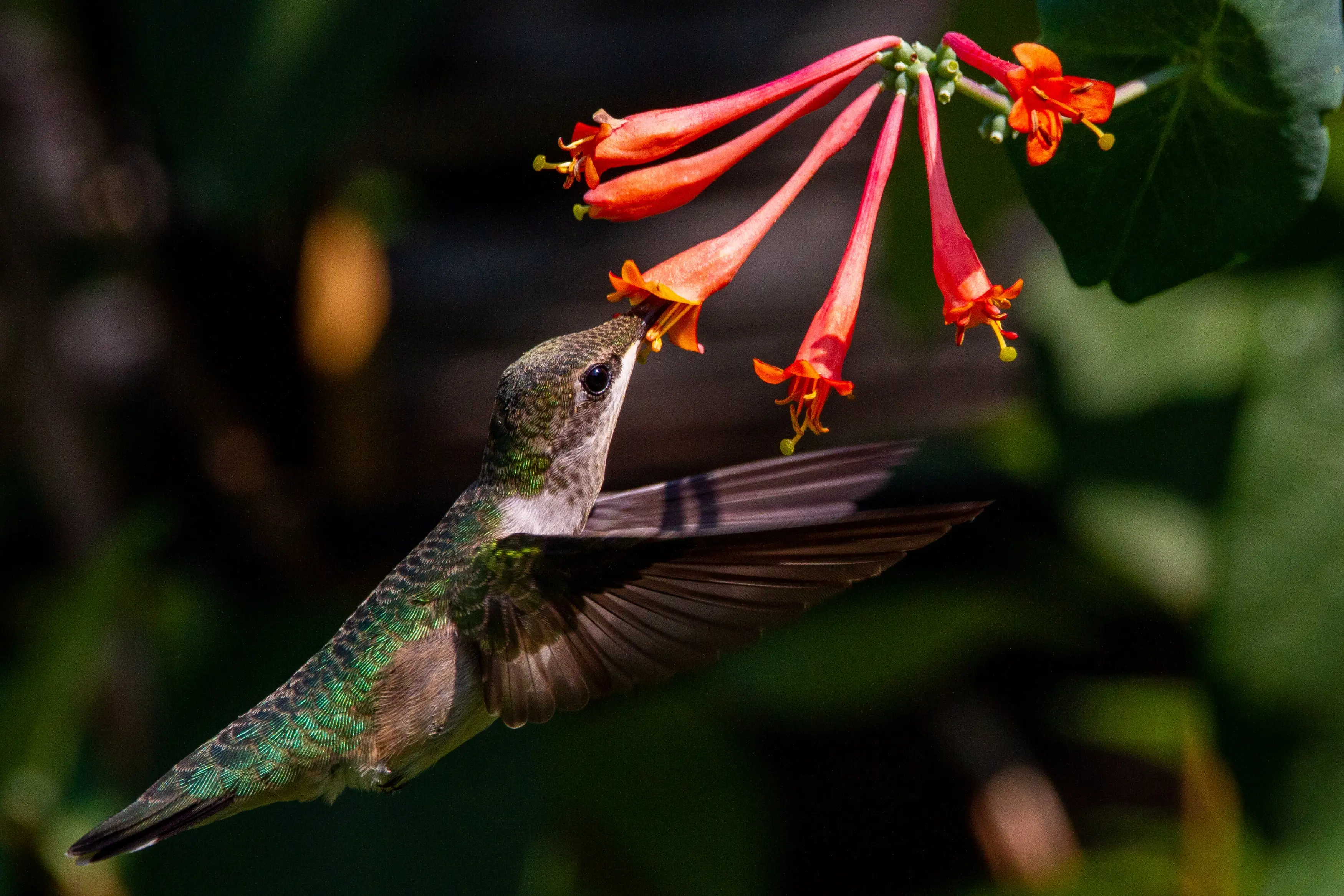
15. Honeysuckle (Lonicera)
And last, but not least, the beautiful flowers of the native honeysuckle vine are a surefire way to bring hummingbirds to your home garden. If you're low on ground space, train one of these easy-to-grow vines along a fence, trellis, or patio wall. The tubular blooms and exciting vibrant colors are sure to catch the eye of your neighborhood's hummingbirds, and their hard-to-reach nectar is a great and reliable food source. Honeysuckle flowers can be all yellow, orange and pink, or crimson red, so choose one that best matches your decor and get planting!
Thanks for reading!
As always, we appreciate your interest in our blog and educational materials. We are happy to celebrate pollinator week, and look forward to seeing you at this Saturday's pollinator event! We'll have craft vendors, a pizza food truck, educational programs, and a butterfly release on site. Hope to see you there!